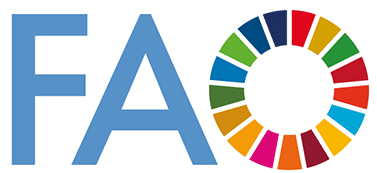Efecto del uso predominante de fungicidas sistémicos para el control de Sigatoka negra (Mycosphaerella Fijiensis Morelet) en el área foliar del banano
Resumen
Sigatoka negra (Mycosphaerellafijiensis Morelet),enfermedad que afecta la capacidad fotosintética de la planta de banano en zonas donde la humedad relativa es alta, y favorece sudesarrollo, hacendel sur del Guayas y del norte de la provincia de El Oro, sus hábitats favoritos, han llevado a los productores al uso indiscriminado de los fungicidas existentes en el mercado. Actualmente existen estrategias de control con el uso de fungicidas protectantes y sistémicos que contribuyen a disminuir los daños ocasionados por este hongo. Este trabajo plantea analizar la eficiencia de los fungicidas más usados comúnmente por los productores en cuatro fincas bananeras para estimar su eficiencia mediante el preaviso biológico en plantas prontas a la floración, utilizando un diseño experimental de bloques al azar con pruebas de Tukey al 0.05 de confiabilidad. Los resultados indicaron que las fincas San Andrés 1-2 y San Andrés 3 ubicadas en la zona Balao, y que usaron en sus programas de control de Sigatoka negra fungicidas protectantes y sistémicos en rotación y mezcla, además de aplicaciones de abonos foliares, presentaron valores estadísticamente diferentes a las otras fincas que aplicaron una mayor cantidad de ciclos con fungicidas sistémicos. Las fincas Elizabeth 2 y La Italia presentaron estados evolutivos más altos en las hojas más jóvenes y una emisión foliar más lenta. Se puede concluir que las fincas San Andrés 1-2 y San Andrés 3 mostraron diferencias significativas en el número de hojas sanas a la cosecha, estados evolutivos y emisión foliar, con un mejor estado fitosanitario. Palabras clave: Alternancia, mezcla, fungicida, sistémico, protectante. ABSTRACT Black sigatoka (Mycosphaerella fijiensis Morelet), a disease that affects the photosynthetic capacity of the banana plant in areas where the relative humidity is high, and favors its development, make the south of Guayas and the north of the province of El Oro its favorite habitat. It have led producers to the indiscriminate use of existing fungicides in the market. Currently, there are control strategies with the use of protectant and systemic fungicides that contribute to reduce the damage caused by this fungus. This work proposes to analyze the efficiency of the fungicides most commonly used by producers in four banana plantations to estimate their efficiency by giving prior notice. biological in plants ready for flowering, using an experimental design of blocks at random with Tukey tests at 0.05 reliability. The results indicated that farms San Andrés 1-2 and San Andrés 3 located in the Balao area, and that used in their control programs of black Sigatoka protectants and systemics fungicides in rotation and mix, besides applications of foliar fertilizers, presented values statistically different from the other farms that applied a greater number of cycles with systemic fungicides. The Elizabeth 2 and La Italia farms showed higher evolutionary stages in the younger leaves and a slower leaf emission. It can be concluded that the farms San Andrés 1-2 and San Andrés 3 showed significant differences in the number of healthy leaves at harvest, evolutionary states and leaf emission, with a better phytosanitary status. Keywords: Alternation, mixture, fungicide, systemic, protectant.Descargas
Publicado
Cómo citar
Número
Sección
Licencia
La editorial "Universo Sur", de la Universidad de Cienfuegos, publica el contenido de la Revista Científica Agroecosistemas bajo una Licencia Creative Commons Atribución-NoComercial-SinDerivar 4.0 Internacional.
© Podrá reproducirse, de forma parcial o total, el contenido de esta publicación, siempre que se haga de forma literal y se mencione la fuente.







